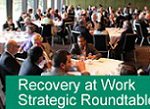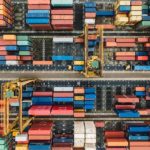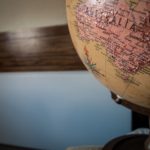Sustaining nine billion people
The World Wildlife Foundation's 2012 Living Planet Report shows that Australia is the world’s seventh biggest user and polluter of natural resources. Dermot O'Gorman says the cost of environmental destruction has been overlooked for too long.
This year’s Living Planet Report highlights the tremendous pressure we are putting on our planet. We are using 50 percent more resources than the earth can provide, and by 2025 even two planets will not be enough.
Healthy ecosystems are a vital form of natural capital and essential to enable 9 billion people to live comfortably on one planet by 2050. WWF’s latest report on the health of species and ecosystems finds a 30 percent overall decline since 1970 in the abundance of key species. Tracked populations of freshwater tropical species have been hardest hit; their numbers have fallen by nearly 70 percent – greater than any species’ decline measured on land or in the oceans. Biodiversity loss can cause ecosystems to become stressed or degraded and eventually collapse.
But the news is not all bad. We can provide sufficient food, fiber, energy and water for nine billion people in the coming decades. The report lays out 16 solutions for doing so. We have the technology and capacity to keep industry churning and jobs growing without depleting our natural resources, species and ecosystems. Sustaining natural wealth is the path to sustaining future generations. Nature is the new capital. To survive and thrive, humanity needs clean air and water, abundant forests, healthy rivers and oceans. For industry to flourish, for high quality jobs and prosperous communities, we need to pass on a healthy planet to future generations.
Redirecting economic decisions and financial flows is key to securing the future of life on Earth.
For example, carbon pollution is undermining natural capital. Greenhouse gas emissions currently account for over half of humanity's ecological footprint. Economists agreed that putting a price on carbon is the most efficient means to integrate the costs of pollution into business planning. A price on carbon shifts investment away from polluting fossil fuels and incentivizes the development of renewable energy technology and energy efficiency. Just as the industrial revolution brought benefits to society, the carbon price will help drive a new clean revolution with wide-ranging social, environmental and economic benefits.
Accounting for natural capital was the focus for the UN's Development Cooperation Forum in Brisbane this month. At this forum, pathways for poor countries to lift the living standards of their growing populations sustainably was high on the agenda.
Likewise, at the Rio+20 Conference in June, world leaders, along with thousands of participants from governments, the private sector, NGOs and other groups, will come together to explore the establishment of a ‘green economy’ that supports both sustainable development and poverty eradication on an ever more crowded planet.
Both companies and governments are starting to factor natural capital into economic and financial planning. Increasingly, they are looking beyond carbon to consider a range of essential ecosystem services and biodiversity as a whole.
For too long the costs of environmental destruction and the benefits of protecting and restoring natural capital have been overlooked by our economic system. Indeed the undervaluation of nature can be seen right here in Australia – look at the pesticides allowed to contaminate the Great Barrier Reef, not to mention damage from dredging in the World Heritage Area, among other examples.
Reducing pesticide and fertilizer run off on the Great Barrier Reef would help to ensure the ongoing viability of a $6 billion tourism industry, and the jobs and livelihoods that depend on it, while also ensuring the long-term sustainability of our rural industries.
According to the latest estimates in the Living Planet Report, it takes the Earth 1.5 years to produce the natural goods and services, and to absorb the greenhouse gas and other pollutants, that humanity currently uses or produces in a single year. We are living beyond our means. Unless we address this overdraft, we will soon find ourselves without the natural wealth we need to support an expanding and increasingly demanding global population. Unfortunately, in contrast to the recent financial crisis, Mother Earth doesn’t do bailouts.
The fundamental reality that must be embedded in our economies and business models is simple: natural capital – biodiversity, ecosystems and ecosystem services – is limited. There is only one Earth. Factor that insight into economic thinking and we can all start to breathe new life into the future.
Dermot O'Gorman is the CEO of WWF Australiaafter his appointment in August 2010. Dermot first joined WWF's UK office in 1998. He has since worked with WWF in the South Pacific, at the WWF International office in Switzerland and, most recently, as the Country Representative of WWF in China. Dermot has worked with leading conservationists, governments and industry leaders to promote the role of WWF.
Dermot O’Gorman is Chief Executive Officer of WWF-Australia. Since becoming CEO in 2010, he has steered WWF-Australia in developing a new strategy, focused on six high impact initiatives in Australia and the region. He also led the organisation through recent big conservation wins, including WWF’s contribution to carbon price laws and plans for a national network of marine parks. Dermot’s passion lies in the big picture of conservation, actively working with businesses, international development agencies, NGOs and community groups towards a planet where humans live in harmony with nature. Dermot has worked for over two decades in sustainable development in Australia, Pacific, Asia, Europe and China and has an MBA (IMD-Switzerland) and a Masters of Science (London School of Economics).













